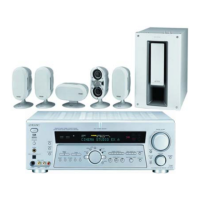
Do you have a question about the Sony CMT-CQ1 - Micro Hi Fi Component System and is the answer not in the manual?
| Type | Micro Hi-Fi Component System |
|---|---|
| CD Player | Yes |
| Bluetooth | No |
| USB Playback | No |
| Speaker type | 2-way bass reflex |
| Remote Control | Yes |
| Power Requirements | AC 220-240V, 50/60Hz |
| Power Output | 20W + 20W |
| Output Power | 20W + 20W |
| Audio Output Power | 20W + 20W |
| Disc Compatibility | CD, CD-R |
| Tuner Bands | FM, AM |
| Tuner | FM/AM |
| Speakers | 2 |
| Inputs | Auxiliary input |
| Outputs | Headphone jack |
Essential source for home theaters, offering studio-quality pictures and CD-quality sound.
Explains progressive scan (480p) for clearer, sharper images compared to interlaced (480i).
Discusses Super Audio CD for multi-channel sound capability and high-resolution audio reproduction.
Covers DIRECTV service for entertainment, digital picture/sound, and High Definition TV.
Explains HDTV, its benefits like detailed picture and Dolby Digital sound, and availability.
Details HDTV receivers, their features, and connection types like DVI-HDTV.
Describes PVRs for recording TV shows, pausing live TV, and managing recordings.
Introduces media receivers for delivering PC content to a home theater system via network.
Discusses the role of VHS Hi-Fi VCRs for recording and playing tapes with Dolby Stereo sound.
Introduces new TV screen types like LCD, plasma, and rear projection, plus aspect ratios.
Explains aspect ratio (4:3 vs 16:9) and its impact on viewing movies and TV.
Provides guidelines for selecting TV screen size based on viewing distance and TV type.
Details different TV screen types: CRT, LCD, and Plasma, discussing their pros and cons.
Covers features like high scanning, Digital Reality Creation, and CineMotion for TVs.
Explains the evolution of surround sound from Dolby Stereo to Dolby Pro Logic and Digital.
Details various surround sound formats like Dolby Digital, Dolby Digital EX, and DTS.
Describes A/V receivers as the central hub for decoding, amplifying, and connecting sources.
Emphasizes matching speakers from the same series for consistent sound quality.
Discusses different speaker types: front, center, surround, and subwoofers, and matched sets.
Guides on determining existing equipment, viewing distance, and level of interest before purchasing.
Presents scenarios for buying home theater systems, from all-in-one to custom installations.
Provides guidance on optimal placement for speakers, source components, and televisions.
Suggests add-ons like universal remotes and wireless headphones for enhanced enjoyment.
Explains line-level analog audio and digital audio connections (optical/coaxial).
Covers RF, composite, S-Video, component, and DVI-HDTV video connection types.